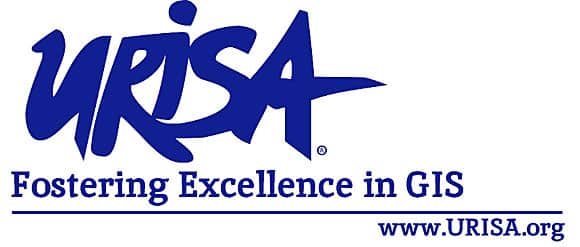Many GIS professionals may not be aware of this, but for more than 10 years, the Urban and Regional Information Systems Association’s (URISA) Policy Advisory Committee (PAC) has been looking out for their best interests.
While the URISA board of directors is responsible for formulating the association’s official positions on government and professional issues, it depends on the PAC—which is composed of seasoned geospatial professionals—for research and advice regarding those positions. The committee’s original charter, which holds true today, is to examine geospatial matters that pertain directly to URISA’s mission and recommend formal policy positions without engaging in partisan political lobbying.
Matters that impact the GIS profession come from multiple sources: state and federal legislation, standards, legal and regulatory proceedings, new technology and procedures, and more. Some critical issues have the potential to affect how GIS professionals do their jobs, such as when states propose legislation that would require people to obtain special licenses to perform general GIS tasks.
URISA members, its board, URISA chapters, PAC members, and even nonmember GIS professionals can request that the PAC put an issue under consideration. Once the PAC is aware of something, it deliberates to determine whether the issue requires URISA to take a formal position on it.
When the PAC recommends that URISA take a position, the committee drafts a position statement and submits it to the URISA board for acceptance and action. Sometimes, however, the PAC will simply provide guidance to affected members.
Recently, the PAC has played a pivotal role—along with the American Association of Geographers (AAG)—in honing the language of the bipartisan federal Geospatial Data Act (GDA) that is currently pending in Congress. When the GDA was first introduced in 2015, the PAC recommended that URISA support the act as written, which the board did. But the legislation was opposed by several geospatial organizations, so it failed to pass that year.
When Senator Orrin Hatch from Utah reintroduced the GDA in early 2017, the PAC and other geospatial organizations discovered that it contained new language that defined geospatial activity specifically as surveying, which would have greatly affected GIS professionals’ ability to participate in federal geospatial activities without having a surveyor’s license. In that second round, the PAC recommended that URISA’s board join other geospatial associations in opposing this new version of the GDA. This opposition was instrumental in getting Hatch to introduce a revised GDA bill on November 15, 2017—Senate bill S.2128—with the objectionable language removed. Representative Bruce Westerman of Arkansas put forth a companion bill, House bill H.R.4395, in the House of Representatives.
The PAC continues to follow the GDA as it works its way through Congress while keeping tabs on other federal geospatial legislation as well, such as the Digital Coast Act and the National Landslide Preparedness Act.

The PAC has also been involved in a number of legislative issues at the state level. Primarily, it has responded to proposed legislation that restricts GIS professionals from mapping physical and administrative features in the course of performing their normal duties. The proposed state legislation often includes language that puts most mapping functions under the guise of licensed surveyors, even if the work is not meant to be authoritative as defined in the National Council of Examiners for Engineering and Surveying’s (NCEES) Model Laws for surveying. Although technology has improved the accuracy and ease of capturing real-world coordinates, that doesn’t mean that GIS is land surveying or vice versa. Surveying involves much more than simply capturing coordinates.
Upon being informed of proposed legislation like this, the PAC works with local URISA members to try to revise the wording so it doesn’t affect GIS professionals and their jobs. Recently, the PAC has responded to these kinds of legislative issues in the states of Georgia, Virginia, Pennsylvania, and North Carolina.
While the PAC has been successful in working with local URISA organizations to amend or kill this type of proposed legislation, in the case of North Carolina it became involved too late in the process, and legislation was passed that requires a licensed surveyor to either do or supervise most GIS work. Although many GIS practitioners were grandfathered in as surveyors when the law passed, at least one GIS company in North Carolina has gone out of business because of it.
As a result of the slip in North Carolina, the PAC is currently investigating whether URISA should subscribe to a legislative service that will notify the organization of any pertinent state or federal legislation in a timely manner rather than rely on word of mouth, as it has been doing. The PAC is also developing guidelines and resources to assist local URISA members in addressing future legislative issues themselves. The intent is to provide and maintain one location where URISA members can identify and track these issues. The guidelines will also provide perspective on the professional boundaries among GIS, land surveying, and photogrammetry to highlight the areas in which GIS can confidently operate.
In addition, the PAC has been working with the American Society for Photogrammetry and Remote Sensing (ASPRS) to review and provide comments on its Geospatial Procurement Guidelines. And, while not directly involved, the PAC played a role in getting the Federal Geographic Data Committee (FGDC) to adopt an address standard and establish a new Address Theme.
The PAC has also been monitoring Ligado Networks’ application to the Federal Communications Commission (FCC) to repurpose for broadband the spectrum adjacent to the one used by GPS/GNSS, which could interfere with the latter’s accuracy, especially in urban areas. Although a similar application was rejected several years ago, this resubmitted application has only proposed minimal technical adjustments that will not successfully remove all the potential harmful effects to the GPS/GNSS spectrum.
All that said, the URISA board does not agree to every PAC recommendation. A number of years ago, there was a California lawsuit to prohibit the selling of public data—specifically one parcel database that would have set the precedent for the rest of the state. The lawsuit had reached the Supreme Court of California, and the PAC recommended that URISA become a cosigner to an amicus brief supporting the lawsuit. But the board resolved that this was not in the best interest of its members and declined to join the amicus brief. In the end, the lawsuit was successful.
While these are only some of the issues that the PAC has been involved in, they demonstrate that URISA has a strong commitment to its members and the GIS community as a whole. Working together not only with other GIS professionals but also with professionals from other fields, such as land surveying and photogrammetry, the PAC aims to improve all geospatial disciplines and aspires to foster mutual understanding and respect.
For more than 50 years, URISA has been instrumental in developing and guiding GIS. The PAC is just one of the many benefits of having the URISA community. Expanding that community by adding your voice to it will only make it stronger. Learn more about becoming a URISA member.



